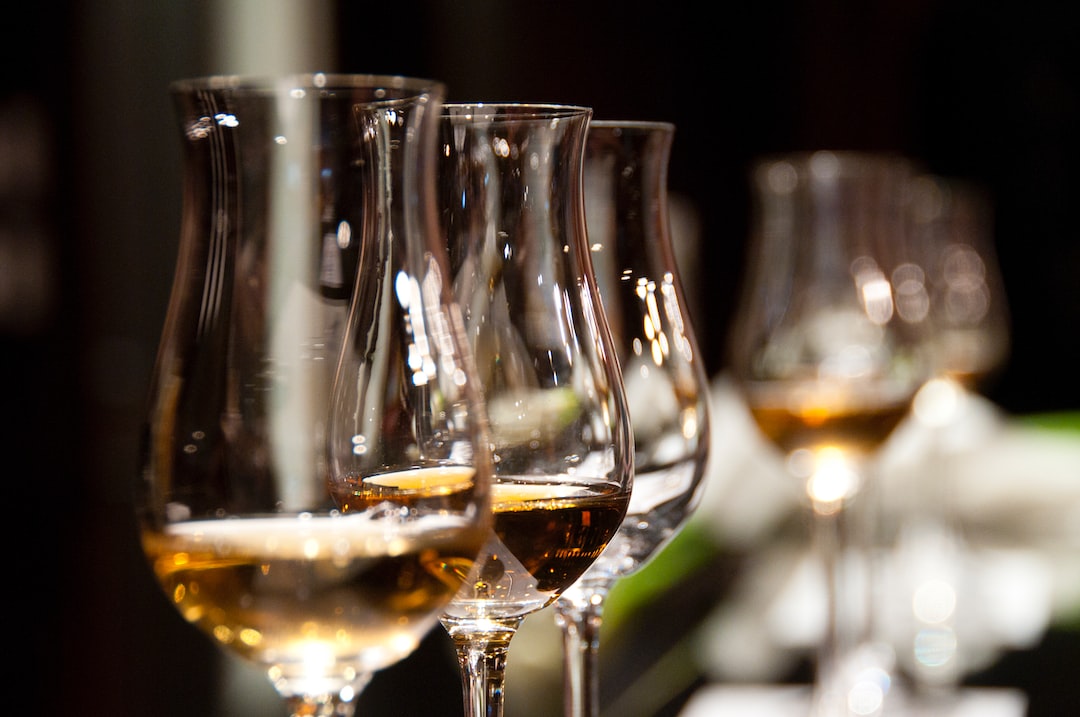
Wine Aging and Its Effects on Color
Share
The art of wine aging is as fascinating as it is complex, weaving a tale of transformation that can elevate a simple beverage to a sublime experience. As wine enthusiasts know, aging can profoundly affect a wine's character, influencing everything from taste and aroma to mouthfeel. But one of the most visible changes that occur during this process is the evolution of the wine's color. The relationship between wine aging and color is a captivating subject, offering a window into the chemistry and craftsmanship that defines fine winemaking. In this guide, we'll delve into the secrets of wine aging and explore how time alters the hue and bouquet of wine, providing both casual drinkers and connoisseurs with a deeper understanding of this liquid legacy.
The Chemistry of Wine Color
Wine color originates from the pigments found in grape skins, primarily anthocyanins in red wines and flavonoids in white wines. These compounds are sensitive to factors like pH, sulfite concentration, and the presence of other compounds, which can all change over time. As wine ages, slow oxidation and reactions between compounds can alter the color in both red and white wines. Red wines may lose their vibrant red hues, shifting towards brick or brown tones, while white wines often evolve from pale straw to deeper gold or amber shades.
Red Wine Color Changes During Aging
In red wines, anthocyanins combine with tannins and other phenolic compounds to form larger molecules over time. This polymerization process can cause the bright purple and ruby colors of young red wines to mellow into garnet and eventually brick-red hues. Additionally, as the acidity of the wine drops, it can further influence the stability of anthocyanins, accelerating the color change.
White Wine Color Changes During Aging
For white wines, the color change is largely due to the oxidation of phenolic compounds, which can lead to a darker, more golden color. Flavonoids like quercetin and kaempferol are susceptible to oxidation, and as they react with oxygen, the color of the wine deepens. White wines with higher acidity levels tend to resist these changes longer, maintaining their lighter color.
The Role of Oxygen in Wine Aging
Oxygen plays a pivotal role in the aging process of wine, acting as both a friend and a foe. Controlled exposure to oxygen can help develop complexity and soften tannins, but too much can lead to spoilage and an unappealing brown color. The wine's journey from barrel to bottle to glass is a delicate dance with oxygen, and understanding this interaction is key to mastering the aging process.
Oxidative Aging in Barrels
Barrels allow for micro-oxygenation, a slow ingress of oxygen through the wood that helps mature the wine. This controlled exposure can enhance the wine's color stability by promoting the formation of larger pigment-tannin molecules in red wines, which are less susceptible to color degradation. In white wines, barrel aging can contribute to a richer color and increased complexity.
Bottle Aging and Oxygen's Influence
Once bottled, the amount of oxygen trapped with the wine, along with the permeability of the closure, determines how the wine will age. Corks allow for a minimal exchange of oxygen over time, which can be beneficial for the development of the wine's color and bouquet. Screw caps and other closures have varying levels of oxygen transmission, which can significantly influence the aging trajectory and final color of the wine.
The Impact of Bottle Age on Wine Color
As wine ages in the bottle, its color continues to evolve. The process is gradual and can result in a stunning array of hues that hint at the wine's maturity and flavor profile. For collectors and enthusiasts, understanding how bottle age affects color can be a key factor in determining the ideal time to uncork a cherished vintage.
Changes in Red Wine Bottle Aging
Over time, the sediment that forms in aged red wines can absorb some of the pigments, leading to a lighter color. The gradual oxidation through the cork also continues to influence the color, causing red wines to take on a more tawny or brownish hue. This color evolution is often associated with a softening of flavors and an increase in tertiary aromas like tobacco, leather, and earth.
Changes in White Wine Bottle Aging
In white wines, bottle aging can lead to a deepening of color, especially in wines with higher levels of phenolic compounds. As these wines age, they can develop rich gold to amber colors, which are often accompanied by complex, nutty, or honeyed flavors. However, excessive oxidation can lead to an undesirable brown color and a flat taste profile.
Wine Storage Conditions and Color Preservation
Proper storage conditions are essential for preserving the color and quality of wine as it ages. Temperature, light, humidity, and position all play a role in how a wine matures and maintains its color integrity. By controlling these factors, wine enthusiasts can ensure their bottles age gracefully and maintain their visual appeal.
Temperature Control for Optimal Aging
Temperature is perhaps the most critical factor in wine storage. Consistent, cool temperatures slow down the chemical reactions that affect color and taste, allowing the wine to age slowly and develop complexity. Fluctuations in temperature can accelerate aging and lead to premature color changes, so maintaining a stable environment is key.
The Effects of Light and Humidity on Wine Color
Light, especially UV light, can cause the degradation of tannins and other color compounds, leading to a loss of color intensity. Humidity plays a role in keeping corks from drying out, which can prevent unwanted oxygen exposure that might alter the wine's color. Storing wine in a dark, humid environment helps protect it from these risks.
Tasting the Rainbow: The Spectrum of Aged Wine Colors
Aged wines offer a spectrum of colors that can be a visual feast for the eyes. From the palest golds of an aged Riesling to the deep garnet of an old Cabernet Sauvignon, the range of colors reflects the diversity and beauty of the wine world. These colors not only delight the senses but also provide clues to the wine's character and aging process.
Visual Indicators of Wine Maturity
The color of a wine can serve as an indicator of its maturity. For red wines, a brick or orange rim on the edge of the glass suggests a certain level of age. In white wines, a deepening color might indicate a wine that has been aged or is maturing in the bottle. These visual cues can help tasters anticipate the types of flavors and aromas they might encounter.
The Aesthetic Appeal of Aged Wine Colors
Beyond their informative value, the colors of aged wines have an aesthetic appeal that can enhance the overall tasting experience. The rich, warm tones of an aged red or the golden hue of a mature white can be captivating, adding an element of visual enjoyment to the sensory pleasure of wine tasting.
The Influence of Varietal and Terroir on Aging and Color
The type of grape and the conditions in which it is grown can influence how a wine ages and its eventual color. Certain varietals and terroirs are known for producing wines that age gracefully, developing complex colors and flavors over time. Understanding these factors can help wine lovers select bottles with aging potential.
Varietal Characteristics and Aging Potential
Some grape varieties are better suited to aging than others due to their natural tannin and acid structure. For example, Cabernet Sauvignon, with its high tannin content, can age for decades, developing a deep, complex color. On the other hand, wines made from grapes like Pinot Noir or certain white wine varieties may not have the same aging potential and will exhibit different color changes as they mature.
Terroir's Impact on Wine Aging and Color
The terroir, or the environment in which the grapes are grown, also plays a significant role in a wine's aging potential and color development. Wines from regions with optimal growing conditions for a particular varietal tend to age better and show more pronounced color changes. Soil composition, climate, and vineyard practices all contribute to the wine's ability to mature gracefully.
The Future of Wine Aging and Color Preservation
Advancements in winemaking technology and a deeper understanding of the aging process continue to shape how we approach wine aging and color preservation. Innovations in barrel production, closure design, and storage solutions are helping winemakers and collectors maintain the desired color and quality of their wines for longer periods.
Technological Advancements in Winemaking
Modern winemaking techniques, such as controlled oxygenation and the use of inert gases during bottling, are helping to preserve wine color. Additionally, the development of new types of barrels and alternative aging vessels can influence the rate of oxidation and pigment development, allowing for more precise control over the aging process.
The Role of Wine Collectors and Enthusiasts
Wine collectors and enthusiasts also play a role in the future of wine aging and color preservation. By staying informed about best practices for storage and aging, they can ensure their collections remain vibrant and true to the winemaker's intent. Sharing knowledge and experiences within the wine community helps to advance the collective understanding of how to best care for aged wines.
In conclusion, the journey of wine aging and its effects on color is a testament to the intricate interplay between nature, science, and art. As we explore the depths of this process, we uncover the remarkable transformations that occur within each bottle, revealing the true potential of wine as it matures. Whether you're a seasoned collector or a curious newcomer to the world of wine, the evolution of color in aged wine is a fascinating subject that adds another layer of appreciation for this timeless beverage.
For those interested in further exploring the world of wine, consider reading our other articles, such as Exploring Dry White Wine Varieties and Why are Cabernet Sauvignons So Popular?, to deepen your knowledge and enhance your wine tasting experiences.



